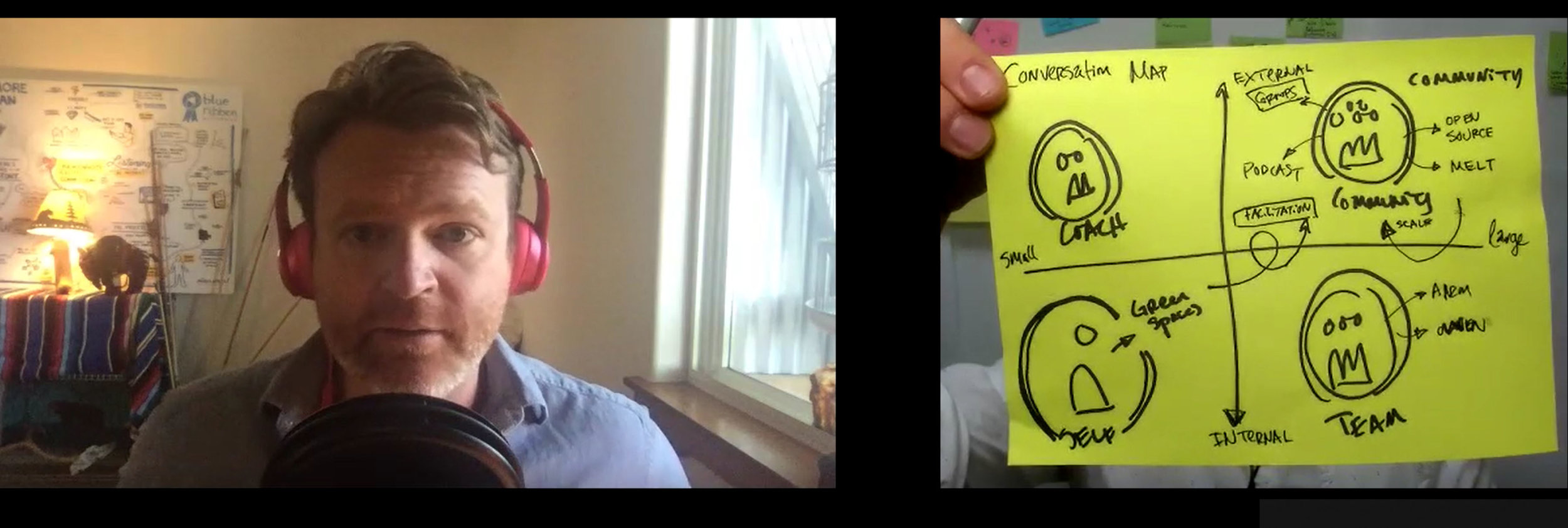This episode features Michael Roderick, founder of Small Pond Enterprises and Host of the Access to Anyone Podcast. Michael is a coach and consultant who knows how to design conversations large and small. We talk about closing the loop on free advice (let people know if it works…otherwise we’ll keep giving bad advice!), teaching through simulations and how to see patterns and build frameworks.
Michael sends a daily (yes, daily!) email that I actually read!
His claim to fame is that he went from High School English Teacher to Broadway producer in under 2 years, which is fast for *any* career shift, let alone a jump like that.
I first learned about Michael’s work years ago through his conference, ConnectorCon, which he designed to build a safe space to talk and connect, and to learn what it takes to be a great connector.
One of the reasons I was excited to bring Michael on the show is that he sees the world through a lens of frameworks, just like me! And we hit on several key ideas that resonate with some components of my Conversation OS, which is always nice.
The Power (and limits of) Narrative. We live our lives through the stories we tell. Stories help us build connections and relationships, but they can also limit us. A positive self-story feels better than a negative story, but it can also limit us and tell us what is and isn’t possible. It’s worth asking for time to time “what stories are serving me? What narrative can help me build a new future and a new identity? What do I believe is possible? What do I *not* try, because I believe it’s impossible?”
The Cadence of Connection. We talk about how Community is a resource you *can* draw from if you’ve built it up over time…and how you need to build it before you need it. Like sleep, it’s something you have to do regularly.
What’s On TV (or…the importance of perspective) Michael has many, many great aphorisms, but this one is amazing. The idea is that you will always be too close to your own issues to solve them… unless you take time to pull back and see the big picture. This is also why we’re always better at solving other people’s problems! And why having a coach is essential.
Competition doesn’t exist… just specialization and niches. We are in competition with ourselves, each of us trying to find our own niche. But watch out! All specializations aren’t compatible…what’s interesting about this to me is the idea that if we can’t connect with someone, it’s not always because of anything other than incompatible approaches, not something “wrong” with you or them.
The Power of Invitation. As Michael points out, “People love to feel useful, but they hate to feel used.” Pressure never works well as an engagement tactic, at least not in the long term. Asking permission, asking nicely and giving people the option to say no gives people choice and allows them to choose to be highly engaged.
You can find links to find Michael on the internet and some deeper learning points in the show notes.
Thanks for listening! You might have noticed I’ve been a little slow on the episodes lately…I’ve been focusing on my next book, due to come out next year! I’ll be kicking the podcast back into gear soon.
Enjoy the show…and if you do, please take a moment and leave a review on iTunes.
Links:
Small Pond Enterprises
http://www.smallpondenterprises.com/
Access to Anyone Podcast
https://itunes.apple.com/us/podcast/access-to-anyone/id1040351484?mt=2
Morning Pages
http://juliacameronlive.com/basic-tools/morning-pages/
Liminal Thinking: an interview with Dave Gray
The Conversation Operating System (OS) Canvas
http://theconversationfactory.com/downloads/










